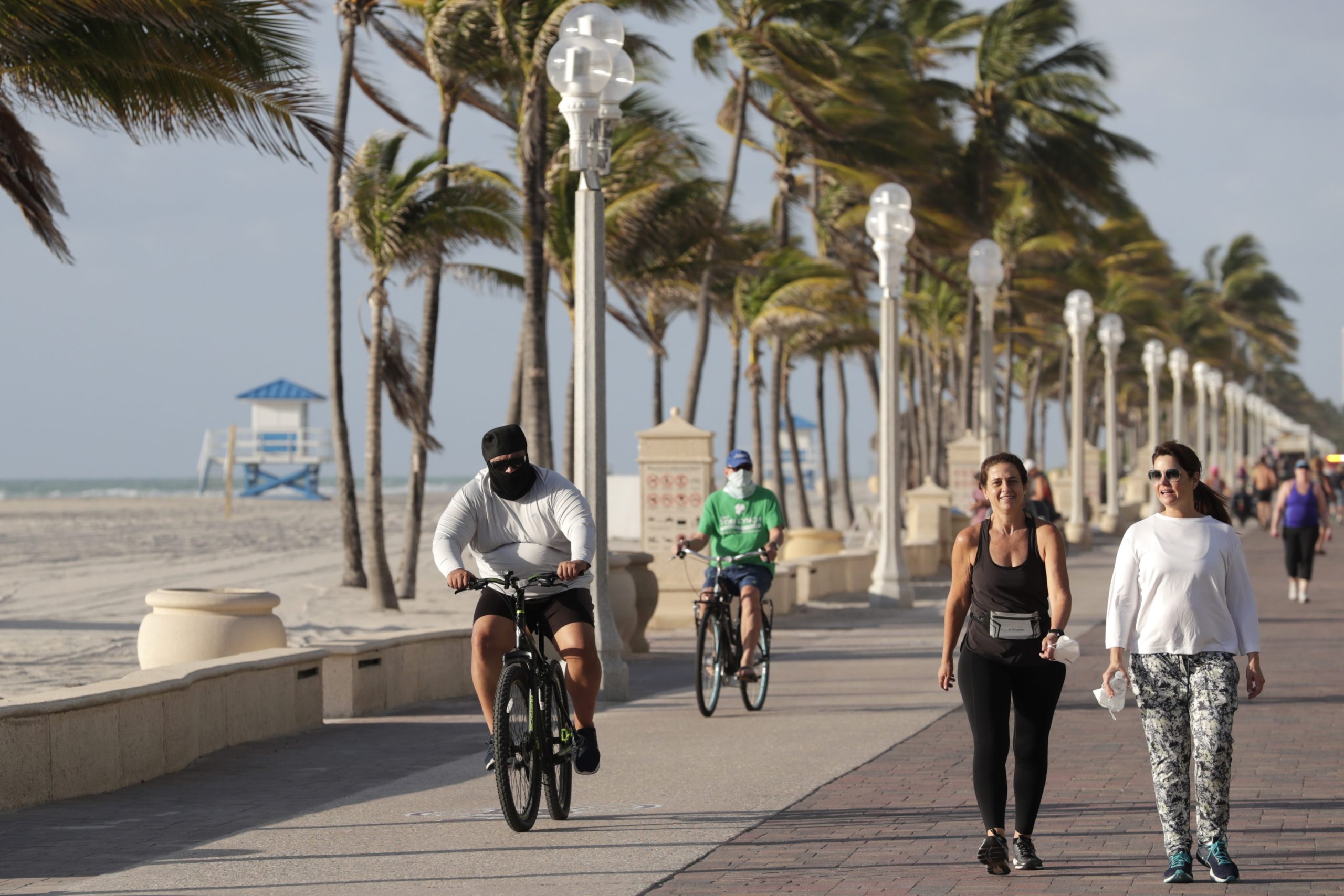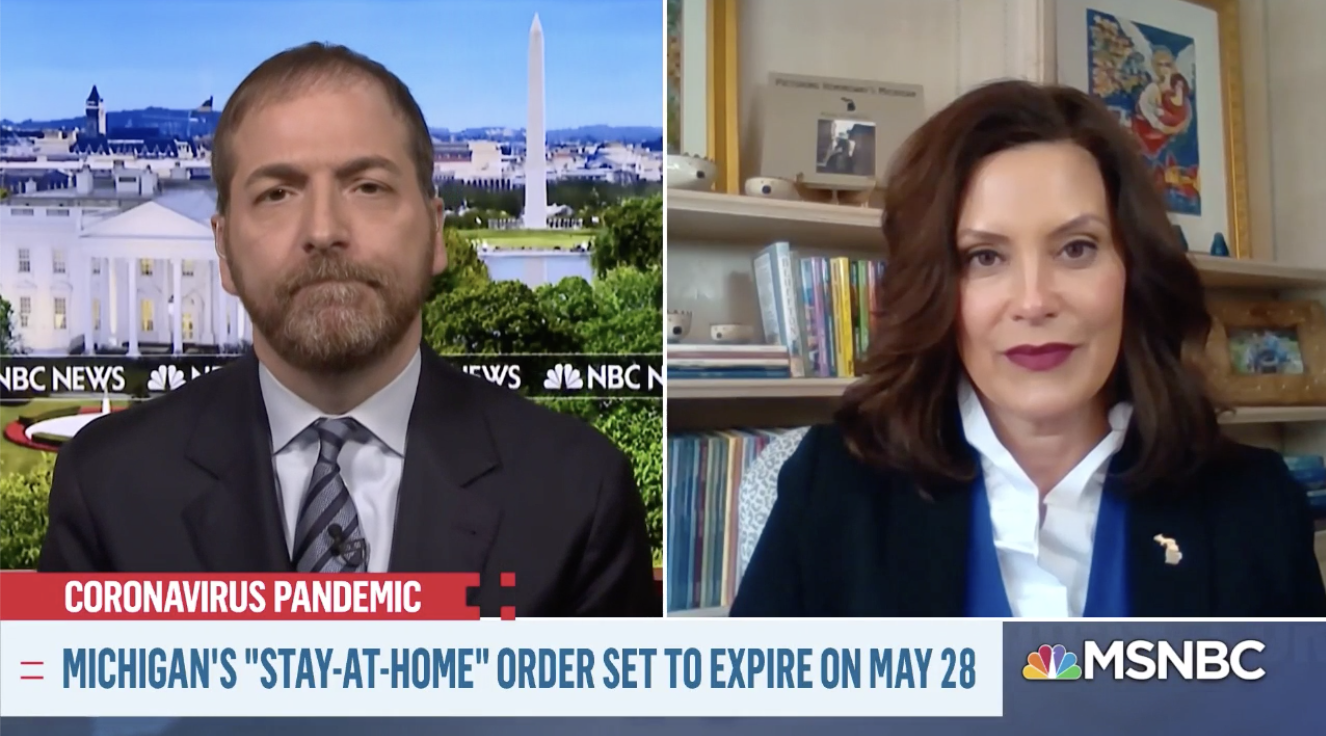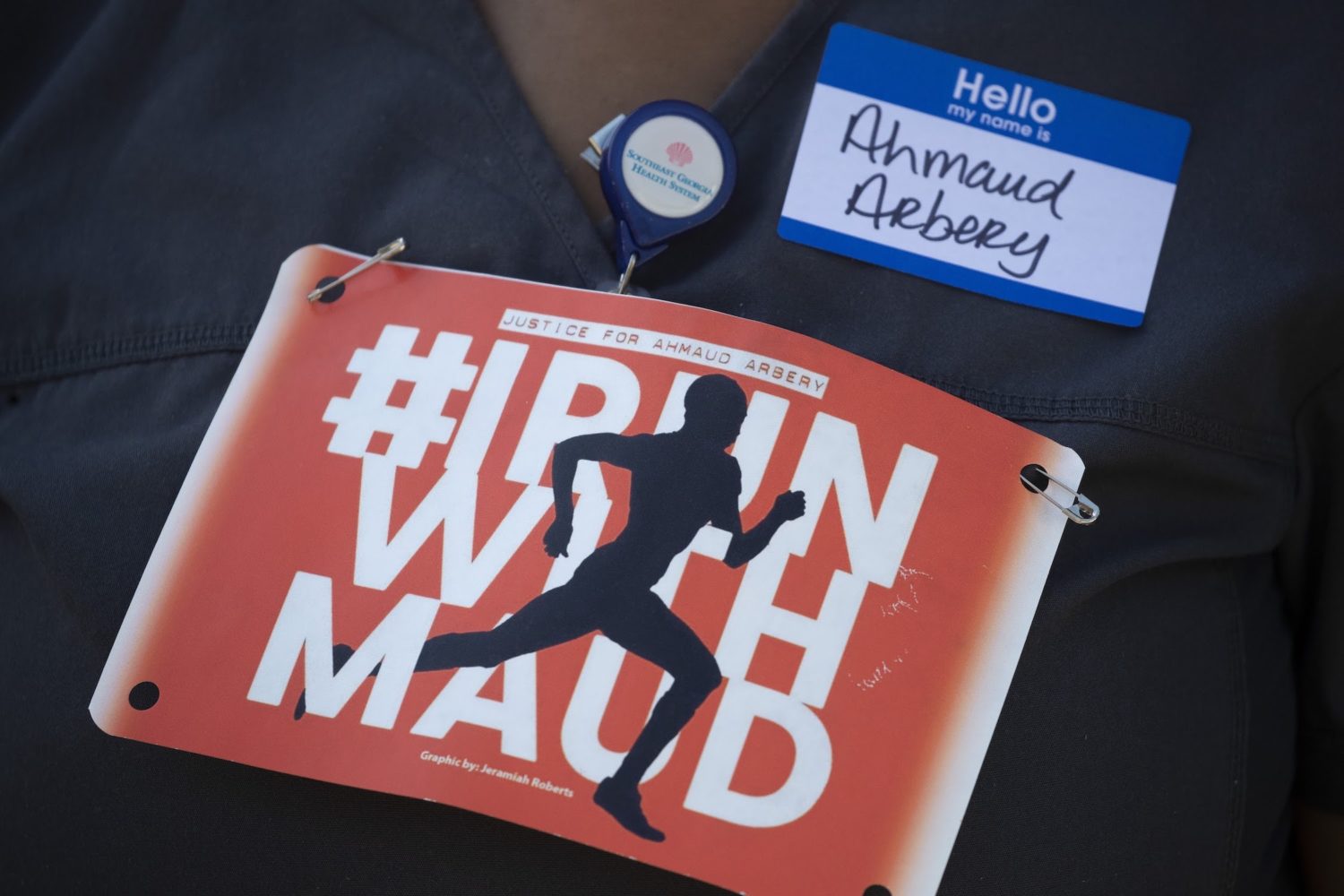The Poynter Report is our daily media newsletter. To have it delivered to your inbox Monday-Friday, click here.
When Larry Hobbs first heard about the shooting, he thought something sounded wrong.
“It didn’t smell good from the start,” Hobbs told me. “And it started to stink to high heaven.”
An unarmed black man gunned down in broad daylight by two white men in a neighborhood outside of Brunswick, Georgia.
“It didn’t sit right with me from the beginning,” Hobbs said.
Hobbs is a reporter for The Brunswick News. The shooting he is talking about was of Ahmaud Arbery on Feb. 23 — a case that has become national news, especially after a disturbing video of the shooting went viral last week.
Earlier this week in The Poynter Report, I wrote how the story stayed mostly under the radar until Richard Fausset wrote about it on April 26 in The New York Times. I asked why it took so long for this story to explode onto the national scene. On Wednesday, people pushed back against my column on social media, saying Hobbs and The Brunswick News have been covering the story all along.
I understand that complaint because it’s a common one: A small, local paper is on the ground covering a story, but then some national outlet like The New York Times swoops in and gets all the credit. The Brunswick News lists a staff of four news reporters and, over the past few years, has listed circulation numbers between 15,000 and 20,000.
So I spoke to Hobbs by phone on Wednesday to find out more about his coverage of Arbery’s shooting.
His first story was the day after the shooting. It was four paragraphs, just the facts: Police were investigating a shooting, considered it “very much an active investigation,” and released no other details. Eventually, Hobbs heard rumors that the victim was being accused of burglary. Originally, there was no mention of the races of the victim or shooters.
“There was talk that it might have been a stand-your-ground or defending-your-castle kind of thing,” Hobbs said. “But that didn’t seem to make sense if you looked at where it happened.”
Between the time of the shooting and The New York Times story, Hobbs wrote seven stories about the case, according to The Brunswick News’ archives. One was about how the local district attorney stepped aside because of a conflict of interest. Another detailed the police report. Throughout, Hobbs said, he was working his sources. He said he did not reach out to any of Arbery’s family or friends, but then received an email from Arbery’s mother a couple of weeks after the shooting. Hobbs said he has since been in contact with Arbery’s uncle.
The case received little coverage by anyone in March. In early April, The Brunswick News ran two letters to the editor asking why no arrests had been made, while Hobbs wrote a few stories about the changes to the head of the investigation.
So, yes, Hobbs and The Brunswick News covered the facts of the case. Then came the Times story.
Fausset recapped much of what was already known, but he also added an element that we hadn’t seen yet. Fausset put a face on and gave a story to the victim. Fausset also got to the heart of the matter: The police report had been based almost entirely on the initial police officer’s interview with one of the shooters, and there seemed to be more to it. He talked to Arbery’s mother and high school football coach who said of Arbery, “Everybody in the community knows he runs.” The Times article also, through a source, described the video, which wasn’t public at the time.
The Times story was the most thorough and complete story up to that point — and contextualized the story in a way that made it important and turned it into a national story.
Hobbs said the Times story made a huge difference.
“Oh, it was thorough, and really well done, as you would expect from The New York Times,” Hobbs said. “And I’m glad they did it. It put a big spotlight on this story and this story needed that spotlight.”
After the Times story and the video of the shooting were published, the shooting gained national attention.
Hobbs said he hopes people know that Brunswick is a good place. He has been at the paper for six years after working as a journalist in South Florida. He loves living and working in Brunswick. And, he said, he is dedicated to continuing his work on the Arbery story.
“I’ll keep at it,” Hobbs said, “because this is an important story.”
Cuts at Condé Nast and BuzzFeed
CNN’s Kerry Flynn reports of major cuts at Condé Nast and BuzzFeed as they deal with the economic woes brought on by the coronavirus.
Condé Nast will lay off about 100 staffers in the U.S. and furlough another 100. In a memo obtained by CNN, Condé Nast CEO Roger Lynch wrote, “Since sending an update last month with our cost reduction plan for the COVID-19 crisis, our leaders and I have been working hard to turn over every stone before having to make job reductions that would impact our teams. Unfortunately, we are at a place today where we need to take additional steps.”
At BuzzFeed, more cutbacks are coming less than two months after staffers had their pay cut by 5% to 25% depending on salary. But, in a memo also obtained by CNN, BuzzFeed CEO Jonah Peretti said that the company was facing “even greater revenue declines than expected.”
Now, 68 employees are being furloughed starting later this week. In addition, salary cuts will remain in place through the end of 2020.
[the_ad id=”667826″]
Cool reporting

Cyclists wear protective face masks as they ride along the Hollywood Beach Broadwalk on Wednesday in Hollywood, Florida. (AP Photo/Lynne Sladky)
I’ve lauded the work of The New York Times’ deputy investigations editor Gabriel J.X. Dance before here in the Poynter Report. He, along with Michael H. Keller, published a disturbing story last September about how the internet had been overrun by videos and photos of children being sexually abused and tortured.
Now, along with Lazaro Gamio, Dance has produced another intriguing piece of work in his speciality: technology. As states are starting to ease at-home restrictions previously in place because of the coronavirus, Dance and Gamio have shown that millions are, indeed, leaving their homes. How do they know? Cellphones.
The neatly designed project shows, to quote the story, “about 25 million more people ventured outside their homes on an average day last week than during the preceding six weeks”
Tweet of the day
Here’s a sweet tweet provided by Idaho Statesman editor Christina Lords. At a time when journalists regularly get criticized, this is welcome. Lords posted a photo of a sign that showed up anonymously outside the paper’s office. The sign read:
“For your essential work today & every day. THANK YOU, JOURNALISTS.”
Second-best tweet of the day
The New York Times’ Maggie Haberman whipped up some good ole-fashioned sarcasm in a tweet that blasted away at Fox Nation — Fox News’ streaming service. In promoting the show called “COVID Contrarian,” Fox Nation described Alex Berenson as a “former New York Times journalist.”
Haberman then stuck the landing: “Say NYT is fake news in several of your segments while heralding a ‘former NYT reporter’ to offer credibility in other segments.”
You have to admit, she makes a point.
[the_ad id=”667872″]
Speaking of Haberman …
I don’t believe there is anyone in the media who understands how President Donald Trump thinks or what makes him tick more than New York Times reporter Maggie Haberman, who has covered Trump for years.
This thought came to me as I watched her interview on last Sunday’s “Reliable Sources” on CNN. She addressed Trump’s lack of empathy and how he likes to fight with people.
“When you have a president who likes to fight with people, who likes to be in fights,” Haberman said, “when he’s at the podium and talking to the public, or when he’s on Twitter and talking to the public, that’s what he’s projecting and all that does is to add to anxiety for a public that is not feeling comfortable right now.”
What makes Haberman’s reporting so valuable is that she DOES — certainly better than most — understand how the president operates. That makes her reporting all the more insightful.
Of course, Trump supporters will argue that Haberman and her paper are anti-Trump, but what can’t be denied is the experience Haberman has gained over the years covering Trump and that makes her especially perceptive — and such a valuable reporter and commentator.
Strong comments

Michigan Gov. Gretchen Whitmer, right, being interviewed by Chuck Todd on “MTP Daily” on Wednesday. (Courtesy: NBC News)
Those protests in Michigan asking the state to reopen? They aren’t so much protests, Michigan Gov. Gretchen Whitmer said, as they are political rallies. Whitmer gave a stunning condemnation on Wednesday’s “MTP Daily” on MSNBC.
“This is an organized effort,” Whitmer told moderator Chuck Todd. “They bring confederate flags, which is not something you see in Michigan very often. They bring swastikas and long guns. They bring their anti-choice propaganda. And I think this is more about a political rally than anything. And I think it is festered and supported by political groups. And I think it’s unfortunate, because we should not be political in this moment. Every one of us should be able to recognize, we’re not one another’s enemies. The enemy is a virus. And it does not distinguish based on party or state line. We all have to be on the same side together to fight this virus.”
Media tidbits
- The Gracie Awards — given annually by The Alliance for Women in Media to recognize exemplary programming created by women, for women and about women in all facets of media and entertainment — have been announced. Here are the winners.
- The Asian American Journalists Association put out a statement Wednesday showing support for CBS correspondent Weijia Jiang and other White House press reporters for “their fearless pursuit of answers, as they have consistently demonstrated in White House coronavirus briefings.”
- NBC News science contributor and expert virologist Dr. Joseph Fair is in the hospital battling COVID-19. On Wednesday’s “NBC Nightly News,” Fair told anchor Lester Holt, “I’m on the other end of it, but not out of the woods yet.” He said he noticed symptoms after a recent flight to New Orleans. He said the flight was packed, but that he wore a mask and gloves and used wipes. He said, “But you know, obviously, you could still get it through your eyes.”
Hot type
- In New York Magazine’s The Cut: “I’m 8 Months Pregnant and My Husband Tested Positive.”
- Also from The Cut: Bridget Read writes about Andy Lack’s departure from NBC News by talking to Linda Vester, who said she was sexually harassed and touched inappropriately by NBC News’ Tom Brokaw.
- BuzzFeed News’ Katherine Miller with “What You Learn When You Read Obituaries.”
- Tampa Bay Times photographer Douglas R. Clifford writes about his bout with the coronavirus.
- My Poynter colleague Roy Peter Clark writes about how TV reporters are helping viewers get through these stressful times.
Have feedback or a tip? Email Poynter senior media writer Tom Jones at tjones@poynter.org.
[the_ad id=”667878″]
More resources for journalists
- Coronavirus Facts Alliance — Poynter and the International Fact-Checking Network
- On Poynt Live training: May 21 at 2 p.m. Eastern — Niche newsletters: Bouncing Back From the COVID-19 Engagement Slump — Poynter
- Virtual Coffee Break for Journalists: May 16 at 2 p.m. Eastern — Society of Professional Journalists Houston Pro Chapter
- Writing Through: The Power of Details In a Pandemic — May 19 at 11:30 a.m. Eastern — Journalism Institute, National Press Club
Want to get this briefing in your inbox? Sign up here.







